Kung Fu Panda
7.4 /10 2 Votes
87% Rotten Tomatoes Release date July 11, 2008 (India) Country United States | 7.6/10 IMDb 73% Metacritic Duration Language English | |||||||||||||||||||||||||||||||||
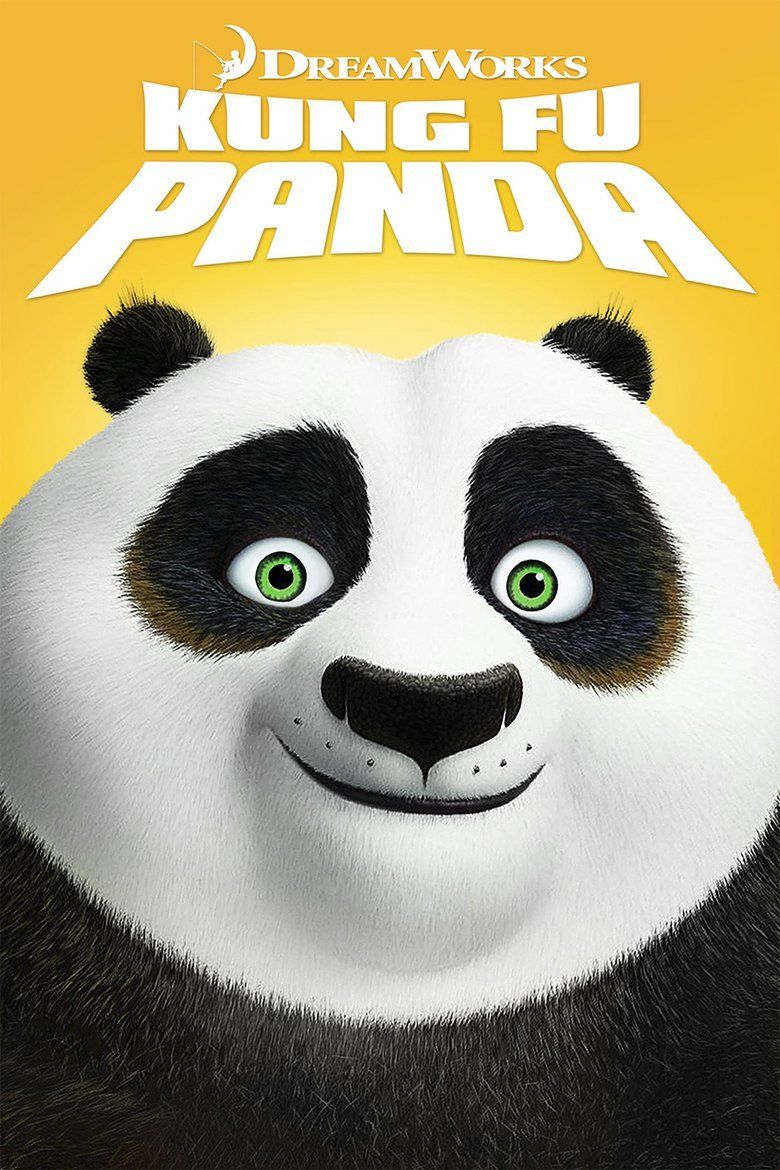 | ||||||||||||||||||||||||||||||||||
Director John StevensonMark Osborne Release date June 6, 2008 (2008-06-06) Writer Jonathan Aibel (screenplay), Glenn Berger (screenplay), Ethan Reiff (story), Cyrus Voris (story) Cast (Po (voice)), (Shifu (voice)), (Master Tigress (voice)), (Master Monkey (voice)), (Master Viper (voice)), (Crane (voice)) Similar movies Teenage Mutant Ninja Turtles , Blackhat , Kung Fu Panda 3 , Kill Bill: Vol. 1 , The Matrix Reloaded , The Matrix Revolutions Tagline Prepare for awesomeness. | ||||||||||||||||||||||||||||||||||
Kung fu panda official trailer 1 hd
Kung Fu Panda is a 2008 American computer-animated action comedy martial arts film produced by DreamWorks Animation and distributed by Paramount Pictures.1 It was directed by John Stevenson and Mark Osborne and produced by Melissa Cobb, and stars the voices of Jack Black, Dustin Hoffman, Angelina Jolie, Ian McShane, Seth Rogen, Lucy Liu, David Cross, Randall Duk Kim, James Hong, and Jackie Chan. Set in a version of ancient China populated by anthropomorphic talking animals, the plot revolves around a bumbling panda named Po who aspires to be a kung fu master. When an evil kung fu warrior is foretold to escape after twenty years in prison, Po is unwittingly named the chosen one destined to defeat him and bring peace to the land, much to the chagrin of the resident kung fu warriors.
Contents
- Kung fu panda official trailer 1 hd
- Plot
- Cast
- Production
- Release
- Home media
- Critical response
- Box office
- Accolades
- Soundtrack
- Sequels
- Manga
- Television series
- Holiday special
- Video game
- Lawsuits
- References
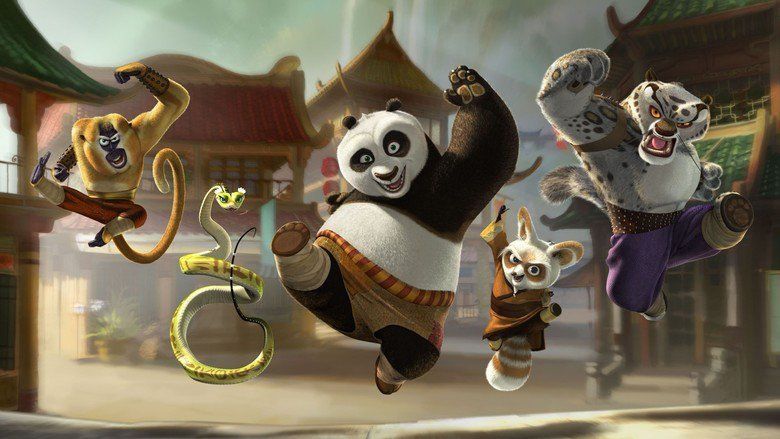
The idea for the film was conceived by Michael Lachance, a DreamWorks Animation executive. The film was originally intended to be a parody, but director Stevenson decided instead, to shoot an action comedy wuxia film that incorporates the hero's journey narrative archetype for the lead character. The computer animation in the film was more complex than anything DreamWorks had done before. As with most DreamWorks animated films, Hans Zimmer (collaborating with John Powell this time) scored Kung Fu Panda. He visited China to absorb the culture and get to know the China National Symphony Orchestra as part of his preparation. A sequel, Kung Fu Panda 2, was released on May 26, 2011, along with a television series, Kung Fu Panda: Legends of Awesomeness later that same year as a part of a franchise. A second sequel called Kung Fu Panda 3 was released on January 29, 2016.

Kung Fu Panda premiered in the United States on June 6, 2008. The film received critical acclaim upon release. Kung Fu Panda opened in 4,114 theaters, grossing $20.3 million on its opening day and $60.2 million on its opening weekend, resulting in the number one position at the box office. The film became DreamWorks' biggest opening for a non-sequel film, the highest grossing animated film of the year worldwide, and also had the fourth-largest opening weekend for a DreamWorks animated film at the American and Canadian box office, behind Shrek 2, Shrek the Third, and Shrek Forever After.
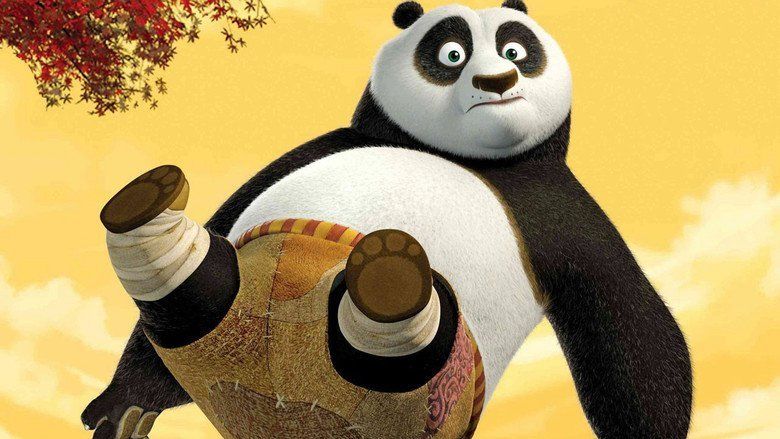
Plot
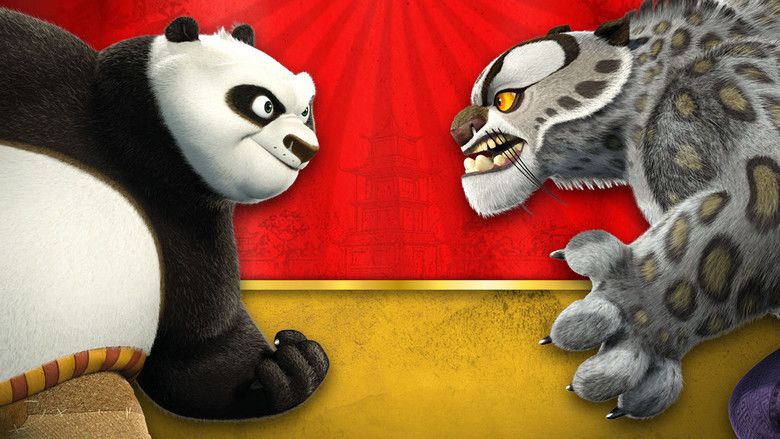
In the Valley of Peace, a land in ancient China inhabited by anthropomorphic animals, the giant panda Po is a kung fu fanatic who idolizes the Furious Five – Tigress, Monkey, Mantis, Viper, and Crane – a quintet of kung fu students trained by the red panda Master Shifu. As he helps his adoptive goose father Mr. Ping in his noodle restaurant, Po is unable to pursue his dream of becoming a kung fu master himself.
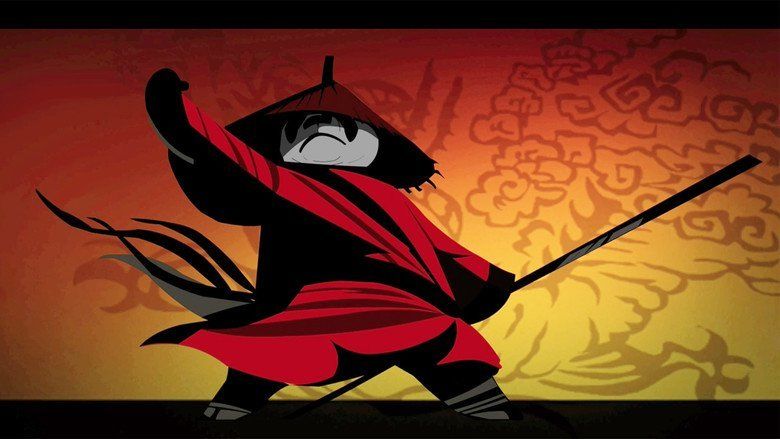
Grand Master Oogway, an old tortoise and Shifu's mentor, has a vision that Shifu's former student, the evil snow leopard Tai Lung, will escape from prison and return to the Valley of Peace to take revenge for being denied the Dragon Scroll, which is said to hold the secret to limitless power. Shifu is alarmed and sends his messenger, the goose Zeng, with a request for the prison to heighten security in order to prevent Tai Lung's escape. He then holds a kung fu tournament for the Furious Five so that Oogway may identify the Dragon Warrior, the one kung fu master worthy of receiving the Dragon Scroll and capable of defeating Tai Lung. Forced to take a cumbersome noodle cart to the tournament, Po arrives as the arena doors close and is unable to enter. Desperate to see the Dragon Warrior chosen, Po straps himself to a set of fireworks, rockets into the sky, and crashes into the middle of the arena and opens his eyes to see Oogway pointing his finger at him. To the shock of everyone present, Oogway proclaims Po as the Dragon Warrior.
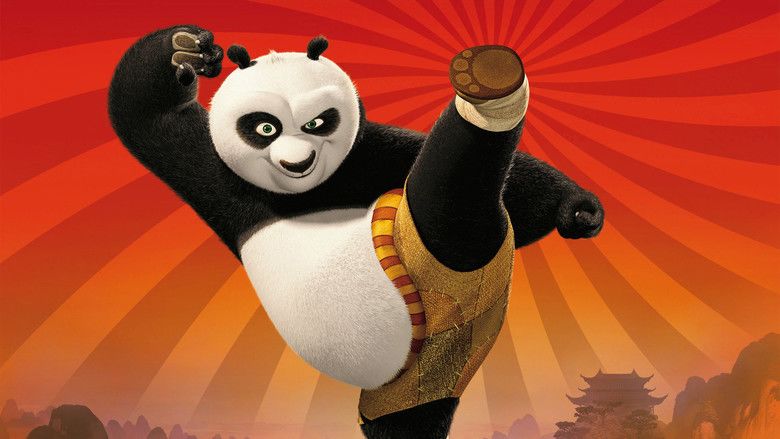
Unwilling to accept that Oogway's decision was intentional, Shifu tries to get rid of Po through a torturous and agonizing training regime. The Furious Five also scorn and disparage Po as an upstart with no skill or potential in kung fu. However, after receiving encouragement from Oogway, Po endures his training and slowly begins to befriend the Five with his tenacity, culinary skill, and good humor. Meanwhile, Tai Lung escapes from prison as foreseen by Oogway, ironically picking his locks with one of Zeng's fallen feathers. Shifu learns of Tai Lung's escape from Zeng and informs Oogway, who extracts a promise from Shifu to believe in Po, and then passes on to the heavens in a stream of peach blossoms. Still unable to grasp the basics of kung fu, Po despairingly admits that he has no chance of defeating Tai Lung. Shifu, however, discovers that Po is capable of impressive physical feats when motivated by food. Using this as positive reinforcement, Shifu successfully trains Po to incorporate these feats into an effective kung fu style.
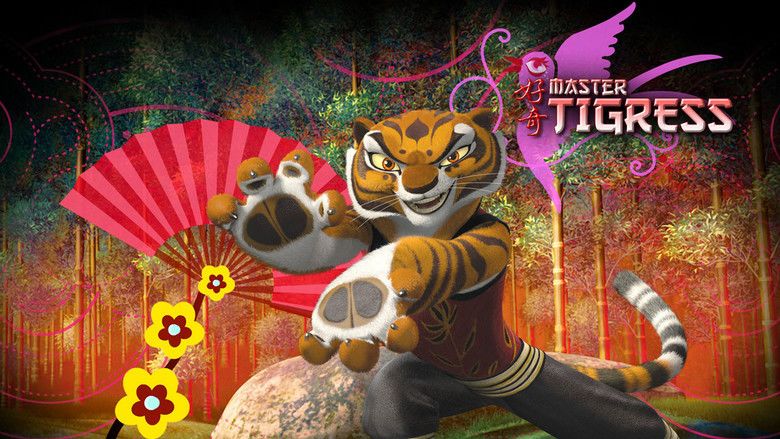
Meanwhile, the Furious Five set out to stop Tai Lung themselves, only to be overwhelmed and defeated by Tai Lung's nerve strikes. Shifu decides that Po is ready to receive the Dragon Scroll, but the scroll reveals nothing but a blank reflective surface. Believing the scroll to be useless, Shifu orders Po and the Five to evacuate the valley. As Tai Lung arrives and fights Shifu, the distraught Po finds Mr. Ping who, in an attempt to console him, reveals that the long-withheld secret ingredient to his famous "secret ingredient soup" is "nothing", explaining that things become special if they are believed to be. Po realizes that this concept is the entire point of the Dragon Scroll, and goes back to confront Tai Lung before he is able to kill Shifu.
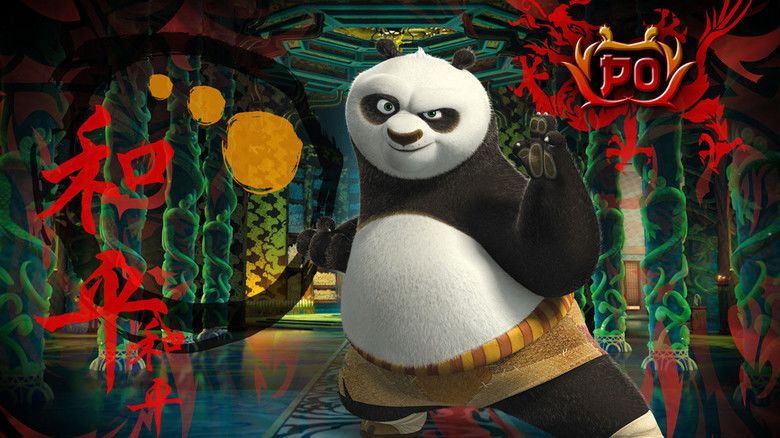
Po becomes a formidable challenge for Tai Lung, frustrating him with confusing fighting techniques on top of a physique that renders him immune to Tai Lung's dangerous nerve strikes. Tai Lung momentarily bests Po and retrieves the scroll, but is unable to understand or accept its symbolic meaning. Eventually, Po defeats Tai Lung in combat before using the mysterious Wuxi Finger Hold to vanquish him. Po is praised by the Valley of Peace and earns the respect of all the Furious Five, who fully acknowledge him as a true kung fu master. Po then finds Shifu, who finally attains inner peace with the valley safe once more.
Cast
Production
Publicized work on the film began in October 2004. In September 2005, DreamWorks Animation announced the film alongside Jack Black, who was selected to be the main voice star.
In November 2005, DreamWorks Animation announced that Dustin Hoffman, Jackie Chan, Lucy Liu and Ian McShane would join Jack Black in the cast. This is also the second DreamWorks Animation film in which Black and Angelina Jolie have co-starred together, the first being 2004's Shark Tale.
The idea for the film was conceived by Michael Lachance, a DreamWorks Animation executive. Initially, the idea was to make it a spoof, but co-director John Stevenson was not particularly keen on it so instead chose the direction of a character based wuxia comedy.
Reportedly inspired by Stephen Chow's 2004 martial arts action comedy, Kung Fu Hustle, the co-directors wanted to make sure the film also had an authentic Chinese and kung fu feel to it. Production designer Raymond Zibach and art director Tang Heng spent years researching Chinese painting, sculpture, architecture and kung fu films to help create the look of the film. Zibach said some of the biggest influences for him are the more artful martial arts films such as Hero, House of Flying Daggers and Crouching Tiger, Hidden Dragon. Stevenson's aim for the film, which took four years to make, was to make "the best looking film DreamWorks has ever made".
The hand-drawn animation sequence at the beginning of the film was made to resemble Chinese shadow puppetry. The opening, which was directed by Jennifer Yuh Nelson and produced by James Baxter, was praised by The New York Times reviewer Manohla Dargis as "striking" and "visually different from most mainstream American animations".
Other reviewers have compared the opening to the evocative style of Genndy Tartakovsky's Samurai Jack. The rest of the film is modern computer animation, which uses bright, offbeat colors to evoke the natural landscape of China. The end credit sequence also features hand-drawn characters and still paintings in the background.
The computer animation used throughout the film was more complex than anything DreamWorks had done before. When the head of production handed the script to VFX Supervisor Markus Manninen, she reportedly laughed and wished him "good luck". "When we started talking," said Manninen, "the movie was still a high concept. But for everyone that looked at it, it screamed complexity. We launched off saying, how can you make this movie tangible? How can you find smart ways to bring this world to life in a way that makes it a great movie and not feel like the complexity becomes the driver of the story, but the story and the emotion being the driver?" In preparation, the animators took a six-hour kung fu class.
Producer Melissa Cobb said that originally Po was "more of a jerk," but that the character changed after they heard Jack Black. According to Jack Black, he mostly worked "in isolation", although he and Dustin Hoffman did spend a day together, which Cobb said helped with the scene where their characters face off. Lucy Liu said that the film "was quite different because it was such a long process." Liu said that when she was presented with the project they already had artwork of her character as well as a "short computerized video version of what she would look like when she moved."
Release
The film held its worldwide premiere at the 61st Cannes Film Festival on May 15, 2008, where it received massive and sustained applause at the end of the film's screening. Kung Fu Panda later had national premieres in the US on June 1, 2008 at Grauman's Chinese Theatre in Hollywood, Los Angeles, California, and on June 26, 2008 at Leicester Square in London, for the UK.
Home media
Kung Fu Panda was released on DVD and Blu-ray on November 9, 2008, and on 3D Blu-ray on December 6, 2011 as a Best Buy exclusive. The DVD double pack release of Kung Fu Panda also includes a short animated film Secrets of the Furious Five. With 7,486,642 DVD units sold in 2008, Kung Fu Panda was the fourth highest-selling film and the first highest-selling animated film of 2008, right before WALL-E, which sold 7,413,548 units.
Critical response
Rotten Tomatoes reported that 87% of 178 critics gave the film a positive review with an average rating of 7.2 out of 10 and with the consensus, "Kung Fu Panda has a familiar message, but the pleasing mix of humor, swift martial arts action, and colorful animation makes for winning summer entertainment." Metacritic reported the film had an average score of 73 out of 100, based on 33 reviews. Audience gave the film an average A- grade on CinemaScore.
Richard Corliss of Time Magazine gave Kung Fu Panda a positive review, stating the picture "provides a master course in cunning visual art and ultra-satisfying entertainment". The New York Times said, "At once fuzzy-wuzzy and industrial strength, the tacky-sounding Kung Fu Panda is high concept with a heart," and the review called the film "consistently diverting" and "visually arresting". Chris Barsanti of Filmcritic.com commented, "Blazing across the screen with eye-popping, sublime artwork, Kung Fu Panda sets itself apart from the modern domestic animation trend with its sheer beauty [...] the film enters instant classic status as some of the most gorgeous animation Hollywood has produced since the golden age of Disney." Michael Phillips of the Chicago Tribune called the film "one of the few comedies of 2008 in any style or Genre that knows what it's doing". However, Tom Charity of CNN criticized the action for "[tending] to blur into a whirlwind of slapstick chaos" and considered the character of Po similar to others played by Black. Peter Howell of The Toronto Star awarded the film two and a half stars, considering it to have a "lack of story" that "frequently manages to amuse, if not entirely to delight".
Box office
The film topped the box office in its opening weekend, grossing $60,239,130 for a $14,642 average from 4,114 theaters and performing much better than analysts had been expecting. It also was the highest-grossing opening for a non-sequel DreamWorks Animation film at the time. In its second weekend, the film retreated 44% to second place behind The Incredible Hulk grossing $33,612,594 for a $8,127 average from expanding to 4,136 theaters. It closed on October 9, 2008 after 125 days of release, grossing $215,434,591 in the United States and Canada and $416,309,969 overseas for a worldwide total of $631,744,560. Kung Fu Panda was the highest-grossing non-Shrek film from DreamWorks Animation in the United States and Canada, before being surpassed by How to Train Your Dragon in 2010.
Kung Fu Panda was also well received in China. It made nearly 110 million Chinese Yuan by July 2, 2008, becoming the first animated film to make more than 100 million Yuan in Chinese box offices. The Chinese director Lu Chuan commented, "From a production standpoint, the movie is nearly perfect. Its American creators showed a very sincere attitude about Chinese culture." With the film's success at the Chinese box office, some people within China have questioned the quality of China's domestic animations. The fact that such a successful film based on Chinese culture was created by the American film industry has led to some Chinese introspection.
Accolades
Kung Fu Panda had been nominated for the Academy Award for Best Animated Feature and the Golden Globe Award for Best Animated Feature Film, but both awards were won by Pixar's WALL-E instead. This was parodied by Jack Black at the 81st Academy Awards, saying "Each year, I do one DreamWorks project, then I take all the money to the Oscars and bet it on Pixar."
By contrast, Kung Fu Panda won 10 Annie Awards (including Best Picture) out of 16 nominations, albeit amid controversy.
Soundtrack
As with most DreamWorks animated movies, composer Hans Zimmer scored Kung Fu Panda. Zimmer visited China to absorb the culture and got to know the Chinese National Symphony as part of his preparation; in addition, Timbaland also contributed to the Soundtrack. The soundtrack also includes a partially rewritten version of the classic song, "Kung Fu Fighting", performed by Cee-Lo Green and Jack Black for the end credits. Furthermore, in some versions, the ending credit was sung by Rain. Although Zimmer was originally announced as the main composer of the film, during a test screening, CEO of DreamWorks Animation SKG Jeffrey Katzenberg announced that composer John Powell would also be contributing to the score. This marked the first collaboration in eight years for the two, who had previously worked together on DreamWorks' The Road to El Dorado and the action thriller Chill Factor. A Soundtrack album was released by Interscope Records on June 3, 2008.
Sequels
A sequel, Kung Fu Panda 2, was released on Thursday, May 26, 2011, to good reviews (Rotten Tomatoes rating of 81%). It was released in 3-D and was directed by Jennifer Yuh Nelson (who directed the 2-D opening sequence of the first film) with the original cast returning. The story features a new villain with a mysterious weapon so powerful it threatens the existence of kung fu, and Po must additionally confront his past.
A second sequel, Kung Fu Panda 3 was announced as a co-production between DreamWorks Animation and Shanghai-based Oriental DreamWorks. Kung Fu Panda 3 was released on January 29, 2016. DreamWorks Animation CEO Jeffrey Katzenberg has said that perhaps the series could see 3 more sequels after Kung Fu Panda 3, bringing it to a six-film series.
Manga
A manga based on the film was released in Japan in Kerokero Ace magazine's September 2008 issue. It is written by Hanten Okuma and illustrated by Takafumi Adachi.
Television series
A television series titled Kung Fu Panda: Legends of Awesomeness aired on Nickelodeon with its premiere on September 19, 2011. From the cast of Kung Fu Panda, only Lucy Liu and James Hong are reprising their roles of Master Viper and Mr. Ping. In the series, Po continues to defend the Valley of Peace from all kinds of villains, while making mistakes, learning about the history of kung fu, and meeting other kung fu masters. In the United States, the series ended its run on June 29, 2016, with a total of three seasons and 80 episodes. However, prior to premiering in the U.S., the final few episodes first premiered in Germany from December 30, 2014 to January 7, 2015.
Holiday special
The Kung Fu Panda Holiday Special was aired on NBC Wednesday, November 24, 2010.
Video game
A video game adaptation of the film was published by Activision on June 3, 2008. The game was released for PlayStation 3, Xbox 360, Wii, PlayStation 2, Nintendo DS and PC platforms. The plot follows the same basic plot as the film, but with Tai Lung portrayed as the leader of various gangs that surround the Valley of Peace, which Po, who possesses some basic martial art skills which can be upgraded as the game progresses, must defeat. The game was released on Microsoft Windows, as well as multiple consoles. However the Windows version has been discontinued. The game received mostly positive reviews; it scored a Metacritic rating of 76% from critics and a 7.5 out of 10 from IGN. In 2009, it won the International Animated Film Society's Annie Award for Best Animated Video Game, "in recognition of creative excellence in the art of animation."
Lawsuits
DreamWorks Animation was sued in 2011 by a writer, Terence Dunn, for stealing the idea for Kung Fu Panda from him. Dunn alleged that DreamWorks Animation had stolen his pitch for a "spiritual kung-fu fighting panda bear" which he sent to a DreamWorks executive in 2001. DreamWorks Animation denied any wrongdoing and after a two-week trial the jurors found in favor of DreamWorks.
In 2011, another lawsuit was brought against the studio by an illustrator named Jayme Gordon. Gordon had created characters under the name "Kung Fu Panda Power" and registered them with the U.S. Copyright Office in 2000. He had pitched this concept work to Disney while Jeffrey Katzenberg, who later left Disney and formed DreamWorks Animation in 1994, was working there. Gordon withdrew his claim just before the trial was due to take place. On December 20, 2015, federal prosecutors charged Gordon with four counts of wire fraud and three counts of perjury for allegedly fabricating and backdating drawings to support the claims in his lawsuit, and for allegedly tracing some of his drawings from a Disney Lion King coloring book. On November 18, 2016, Gordon was convicted for wire fraud and perjury, facing a sentence of up to 25 years in prison.
References
Kung Fu Panda WikipediaKung Fu Panda IMDbKung Fu Panda Rotten TomatoesKung Fu Panda MetacriticKung Fu Panda themoviedb.org
